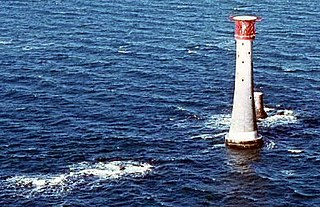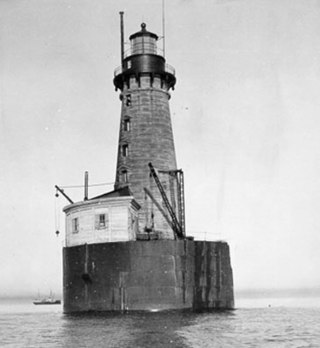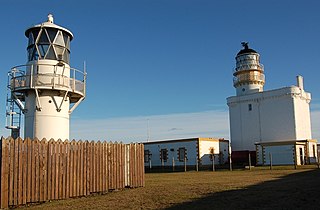 | |
 | |
| Established | Built 1813 Council Housing 1955-1974 Museum 1974-present |
|---|---|
| Location | Arbroath Signal Tower Museum, Ladyloan, Arbroath, DD11 1PU |
| Director | Angus Alive |
| Website | |

The Signal Tower is a museum in the coastal town of Arbroath, Angus, Scotland.
 | |
 | |
| Established | Built 1813 Council Housing 1955-1974 Museum 1974-present |
|---|---|
| Location | Arbroath Signal Tower Museum, Ladyloan, Arbroath, DD11 1PU |
| Director | Angus Alive |
| Website | |

The Signal Tower is a museum in the coastal town of Arbroath, Angus, Scotland.
Originally built in 1813 as a base of operations for the famous Bell Rock Lighthouse, the Signal Tower housed the families of the keepers stationed on the 'rock', along with the vital shore staff who ran the lighthouse tender supplying the light. The name Signal Tower comes from the signalling apparatus installed atop of the tower building that was used to communicate between the shore staff (the Master Of The Tender) and the keepers of the lighthouse. An identical set of signalling apparatus is installed atop the lighthouse itself. Installed within the Signal Tower was a small observatory outfitted with a powerful telescope; it was through this telescope that the signalling apparatus on the lighthouse was monitored during the day. In an age before wireless communications, the ball system employed by the Bell Rock was seen as state of the art technology. At night, any fluctuation to the light would see the supply vessel set sail for the 'rock' to investigate.
The signalling apparatus worked with a ball hoisted up and down a pole. The Master of the Tender or one of his staff was responsible for keeping watch between 9am and 10am, during which period the lighthouse keepers would hoist the ball up to the top of the pole if all was well. During foggy weather, the watch was postponed to 1pm. If the ball did remain down, it usually signified a major emergency such as a chronic shortage of provisions or illness of one of the lighthouse keepers, in any case, the tender was launched and would sail for the lighthouse as soon as possible. In 1955, with the advent of helicopters and faster boats, staffing for the lighthouse was carried out from Leith, home of the Northern Lighthouse Board.
Fishing vessels from Arbroath would routinely carry newspapers, fresh rolls and other non-essential provisions to the keepers and would relay messages back to the shore station, either on behalf of the Master of the Tender or as a favour to the lighthouse keepers.
After the NLB handed the building to the then Arbroath Town Council, it was used for around 15 years as council housing before being converted in the 1970s into a museum.

After its brief and bizarre spell as council housing, the building was converted into a museum, focusing on Arbroath and the surrounding area. Arbroath, like Dundee was a major jute processor and was home to many world-renowned companies, including Shanks Lawnmowers, Giddings + Lewis-Fraser and Keith & Blackman. The museum holds many items and documents relating to the lawnmower manufacturer Shanks, including a number of lawnmowers produced by the company, as well as a variety of documents, photographs and company insignia from Giddings + Lewis-Fraser and Keith & Blackman.
In addition to the manufacturing exhibits, the Signal Tower Museum also has many exhibits relating to the Bell Rock Lighthouse, a scale model of the Inchcape Rock and the lighthouse upon it, and one of the light mechanisms previously fitted to the lighthouse. There is a wide range of exhibits relating to the fishing industry, with scale models of many fishing vessel types once found in the harbour at Arbroath, along with information on fishing and the fish processing industry in Arbroath.
In addition to the historical exhibits relating to Arbroath, there is also useful information for ramblers with information on the numerous nature trails around Arbroath.

Arbroath or Aberbrothock is a former royal burgh and the largest town in the council area of Angus, Scotland, with a population of 23,902. It lies on the North Sea coast, some 16 miles (26 km) east-northeast of Dundee and 45 miles (72 km) south-southwest of Aberdeen.

Longships Lighthouse is an active 19th-century lighthouse about 1.25 mi (2.0 km) off the coast of Land's End in Cornwall, England. It is the second lighthouse to be built on Carn Bras, the highest of the Longships islets which rises 39 feet (12 m) above high water level. In 1988 the lighthouse was automated, and the keepers withdrawn. It is now remotely monitored from the Trinity House Operations & Planning Centre in Harwich, Essex.

The Eddystone Lighthouse is a lighthouse that is located on the Eddystone Rocks, 9 statute miles (14 km) south of Rame Head in Cornwall, England. The rocks are submerged below the surface of the sea and are composed of Precambrian gneiss.

The Bell Rock Lighthouse, off the coast of Angus, Scotland, is the world's oldest surviving sea-washed lighthouse. It was built between 1807 and 1810 by Robert Stevenson on the Bell Rock in the North Sea, 11 miles (18 km) east of the Firth of Tay. Standing 35 metres (115 ft) tall, its light is visible from 35 statute miles (56 km) inland.

The Bishop Rock is a skerry off the British coast in the northern Atlantic Ocean known for its lighthouse. It is in the westernmost part of the Isles of Scilly, an archipelago 45 kilometres off the southwestern tip of the Cornish peninsula of Great Britain. The Guinness Book of Records lists it as the world's smallest island with a building on it.

Marblehead Lighthouse in Marblehead, Ohio, United States, is the oldest lighthouse in continuous operation on the American side of the Great Lakes. It has guided sailors safely along the rocky shores of Marblehead Peninsula since 1822, and is an active aid to navigation.
Skerryvore is a remote island that lies off the west coast of Scotland, 11 nautical miles southwest of Tiree. Skerryvore Lighthouse is located on these rocks, built with some difficulty between 1838 and 1844 by Alan Stevenson.

The Baily Lighthouse is a lighthouse on the southeastern part of Howth Head in County Dublin, Ireland. It is maintained by the Commissioners of Irish Lights.

The Lizard Lighthouse is a lighthouse at Lizard Point, Cornwall, England, built to guide vessels passing through the English Channel. It was often the welcoming beacon to persons returning to England, where on a clear night, the reflected light could be seen 100 mi (160 km) away.

The New Presque Isle Light was built in 1870, at Presque Isle, Michigan, east of Grand Lake, and sits on the namesake peninsula. It is one of 149 lighthouses in Michigan, more than any other state. Because of changing shoreline particularly, or alternatively deterioration of the original building, it is not uncommon for a replacement lighthouse to be placed in the vicinity of an earlier light, in this case, the Old Presque Isle Light.

Point Sur Lighthouse is a lightstation at Point Sur 24.6 miles (39.6 km) south of Monterey, California at the peak of the 361-foot (110 m) rock at the head of the point. It was established in 1889 and is part of Point Sur State Historic Park. The light house is 40 feet (12 m) tall and 270 feet (82 m) above sea level. As of 2016, and for the foreseeable future the light is still in operation as an essential aid to navigation. Point Sur is the only complete turn-of-the-20th-century lightstation open to the public in California. Three-hour walking tours guided by volunteers are available on Wednesdays and weekends throughout the year.

Hurst Point Lighthouse is located at Hurst Point in the English county of Hampshire, and guides vessels through the western approaches to the Solent.

The Stannard Rock Light is a lighthouse located on a reef that was the most serious hazard to navigation on Lake Superior. The exposed crib of the Stannard Rock Light is rated as one of the top ten engineering feats in the United States. It is 24 miles (39 km) from the nearest land, making it the most distant lighthouse in the United States. It was one of the "stag stations", manned only by men, and had the nickname "The Loneliest Place in the World".

The Wood Islands Lighthouse is a historic lighthouse built by Donald MacMillan situated on the southeastern shore of Prince Edward Island, located in the community of Wood Islands. The lighthouse is a well-preserved three storey tower with an adjoining 1+1⁄2-storey keeper's residence. The white shingled tower is topped by a red iron lantern, which is enclosed by a white railing on the observation deck. The red roof of the dwelling provides a striking contrast to the white shingled exterior of the dwelling.

Cape Bonavista Light is a lighthouse located on Cape Bonavista, Newfoundland. The lighthouse, which operated from 1843 until 1962, is now a provincial museum, containing an exhibition about life in a lighthouse during the 1870s.

Completed in 1849, the original 20-metre (66 ft) Wadjemup Lighthouse was Western Australia's first stone lighthouse and was built to provide a safer sailing passage for ships to Fremantle Port and the Swan River Colony.

Grassy Hill Light, also known as Cooktown Light, is an active lighthouse located on Grassy Hill above Cooktown, Queensland, Australia, on the south side of the entrance to Endeavour River.

Roche's Point Lighthouse is situated at the entrance to Cork Harbour, Ireland. A lighthouse was first established on 4 June 1817 to guide ships into Cork Harbour. The original tower was deemed too small and in 1835 was replaced by the larger present tower which is 49 feet high with a diameter of 12 feet. Roche's Point Lighthouse, and a number of other structures, are located on a headland of the same name.

There are two lighthouses located on Kinnaird Head, in Fraserburgh, Scotland: an historical one built in a converted castle; and its modern replacement, built in 1991.

The Santa Marta Lighthouse is situated to the south of the centre of Cascais, Lisbon District, Portugal, on the estuary of the River Tagus, providing a light for the Cascais Bay and for the town's new marina. It is a quadrangular masonry tower covered with white tiles, with blue horizontal stripes and a red lantern. The lighthouse was built on the grounds of the Santa Marta Fort, which now houses a lighthouse museum.